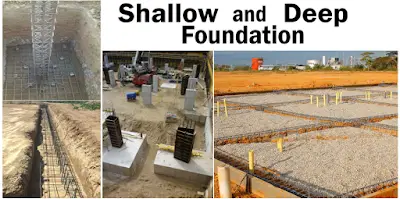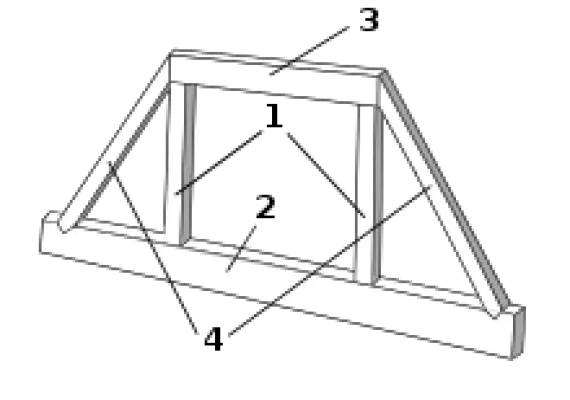House Foundation: Top 8 Types of House Foundations
House Foundation: Types of House Foundations
What is House Foundation
The foundation is that part of the house that is built below the ground surface and supports the house. A properly built foundation will keep the house from being damaged or twisted out of shape due to settlement of the earth, weight of the structure, high winds, or frost action. A good house must have a good foundation to shoulder its considerable weight, provide a flat and level base for construction, and separate wood-based materials from contact with the ground, which would cause them to rot and invite termite infestation.
Depending on when and where a house was built, the foundation may be made of stone, brick, preservative-treated lumber, concrete block, or poured concrete. By far the most common material for foundations is concrete.
Most houses have a raised perimeter foundation that supports floors and load-bearing walls. Some are built on a flat, concrete slab, which provides both a base for the structure and serves as the bottom floor of the house. Still others, notably vacation homes as well as small, older houses, oftentimes rest on a series of concrete piers.
Some houses utilize all of these methods for different portions of the house. Houses with perimeter foundations, for example, often have post-and-pier supports beneath a beam that runs under a load-bearing wall along the middle of the house.
The bottom part of a foundation is called a footing (or footer). The footing is generally wider than the foundation wall and is located about 12 inches below the frost line (the average depth at which soil freezes year after year). The footing distributes the house’s weight to prevent settling or movement
Types of House Foundations
Following are different types of house foundations used in construction:
- Shallow foundation; This is the foundation which is placed near the surface of the earth or transfers the loads at shallow depth is called the shallow foundation. The depth of shallow foundation is generally about 3 meters or the depth of foundation is less than the footing width. Shallow foundations transfer loads mostly by end bearing and includes the following types:
- Individual footing or isolated footing
- Combined footing
- Strip foundation
- Raft or mat foundation
- Deep Foundation. this is the foundation which is placed at a greater depth or transfers the loads to deep strata. Deep foundations are generally more expensive than shallow foundations. It comprises of:
- Pile foundation
- Drilled Shafts or caissons
Important factors for selection of foundation system
Economic feasibility is one of the most important factors for selection of foundation system. There are many other important factors that one should consider before choosing a foundation system for a particular structure. Those factors are briefly noted below:
- Importance of the Building
- Life of the Structure
- Loads from superstructure
- Type of construction materials to be used.
- Water table level.
- Type of adjoining structure.
- Soil condition.
- Location of building
Also Check:>> Average cost of Building a 3 Bedroom House
House Foundation: The Top Importance of a House Foundation
The following are a few motives why you need to make sure the house you will be stepping in to have a strong and sturdy foundation.
Solid safety for the whole structure:
It would help if you made sure that the foundation is solid, or the house might start to crumble down around you. A solidly built foundation gives the stableness necessary to maintain the home status for many years to come back.
Settling and Shifting:
Homes that lack a strong foundation will shift and settle a lot more than ordinary houses do. This is the house that does not have solid foundation construction on it can have major cracks as the house settles. The reasons for volatile foundations encompass the combination of the materials used as an underlay, no compacting, and not nicely pouring and working the concrete.
House Foundation helps Maintain Property Value:
Since the home is the finest investments any person may ever make, the right care must be taken to ensure the overall value of the home is maintained. This is accomplished quality by way of making sure the foundation is a strong one.



